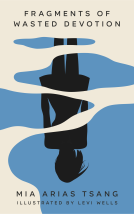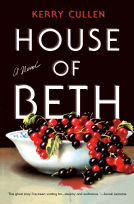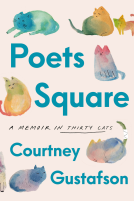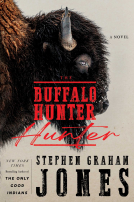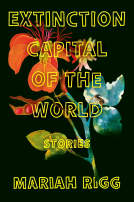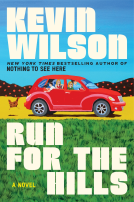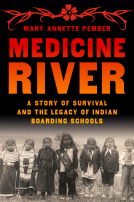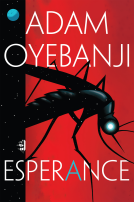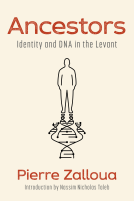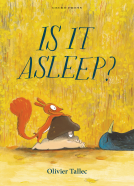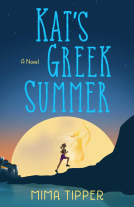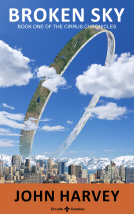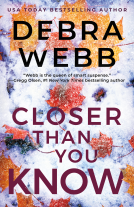
A History of Hazardous Objects
A Novel
by Yxta Maya Murray
This title was previously available on NetGalley and is now archived.
Send NetGalley books directly to your Kindle or Kindle app
1
To read on a Kindle or Kindle app, please add kindle@netgalley.com as an approved email address to receive files in your Amazon account. Click here for step-by-step instructions.
2
Also find your Kindle email address within your Amazon account, and enter it here.
Pub Date Sep 10 2024 | Archive Date Oct 31 2024
Talking about this book? Use #AHistoryofHazardousObjects #NetGalley. More hashtag tips!
Description
Simultaneously, Laura is trying to write the history section of a Congressional report titled the National Near-Earth Object Preparedness Strategy and Action Plan. This report will advise Congress that it must develop a system to detect and deflect PHOs, and the section Laura is working on cites several historical meteorite impacts as proof that the Earth is now undefended against a significant impact event.
A story about family, love, risk, and science, A History of Hazardous Objects contemplates how experiencing trauma and pain may help us secure a safer and more just world.
Advance Praise
“Yxta Maya Murray is a brilliant original. This dazzling novel journeys from micro to macro: we become intimate with this family in crisis while Laura’s work takes us into the deepest mysteries of space and the very structure of the earth. A History of Hazardous Objects abounds with humanity and projects the fragility of that humanity against the evolutionary forces of the universe.”
—Elizabeth McKenzie, author of The Portable Veblen: A Novel
Marketing Plan
• Offers an important perspective on the racial reckoning issues of 2020
• Will draw in readers interested in space and science (NASA, PHOs, and aerospace engineering)
• Explores the troubling increase in Western states wildfires and their impact on everyday life, along with the longer range influence of climate change
• A family drama about how human beings rise above catastrophe
Available Editions
| EDITION | Other Format |
| ISBN | 9781647791636 |
| PRICE | $24.00 (USD) |
| PAGES | 172 |
Available on NetGalley
Featured Reviews
 Paul W, Reviewer
Paul W, Reviewer
No more mythological stories of chaos, the narrator of Yxta Maya Murray’s provocative “A History of Hazardous Objects” pleads with her mother at one point, and that was my reaction to the novel’s various such fables, even with their relevance to the novel’s cataclysmic concerns.
How much more cataclysmic can you get, after all, than the colossal meteorite that was supposed to have wiped out all the dinosaurs on the Earth millions of years ago or, at the time of the novel, another celestial body looking to be headed the Earth’s way sometime this century.
Almost as intriguing for me, though, as the celestial phenomena, for all their literally earth-shaking consequence, was the personal situation of the astronomer studying them, Laura de Leon, who in the course of the novel will come down with Covid, and her family, husband Paul, who is suffering from colon cancer, and son Tomas, who is grappling with the complexities of a gay romance.
Provocative, as I say, on both the larger and scales, Murray’s novel, though with its decided scientific slant not for everyone, but made less intellectually intimidating by the focus on Laura’s family, which frankly I found more compelling than the astronomical phenomena, and even, in the novel’s final pages, quite moving.
 Reviewer 1349299
Reviewer 1349299
I really liked this book! It was very entertaining and make me think a lot. It was well written and very intriguing. Overall I enjoyed this book!
Thank you to NetGalley, the author, and the publisher for this ARC in exchange for my honest review!!!
Thank you to NetGalley and the publisher for the eARC! This novella is out from University of Nevada Press now.
Full Rating: 4.5 stars rounded up
Yxta Maya Murray’s A History of Hazardous Objects is a brief yet powerful meditation on science, mythology, trauma, and survival in a world besieged by crisis. Set in 2020, the novella follows Laura, a Mexican American astrophysicist, as she grapples with the simultaneous pressures of the COVID-19 pandemic, the Black Lives Matter uprisings, and the looming possibility of asteroid impact. Laura’s career revolves around tracking Potentially Hazardous Objects (PHOs) like asteroids and comets, but her life is also shaped by the mystical stories her mother told about cosmic destruction. Caught between science and myth, Laura struggles to protect her family from both earthly and celestial threats while navigating personal loss and societal upheaval.
Murray’s writing is emotionally charged and lyrical, with moments of fragmented, poetic reflection that mirror Laura’s fractured mental state. The narrative deftly shifts between the practicalities of Laura’s day-to-day life—caring for her husband, son, and elderly mother—and the larger existential questions she faces. These questions are symbolized by the asteroids she studies and the crises unfolding around her, making the novella a profound exploration of fear and resilience. The story blends historical and scientific fact with Laura’s imaginative retellings of the lives of real-life scientists, creating a tension between the objective and the fantastical that reflects the uncertainty of living in a world on the brink of collapse.
At its core, A History of Hazardous Objects explores how trauma and catastrophe shape human understanding and connection. As Laura delves deeper into her research on asteroids, she begins to see the scientists she admires as figures shaped by their own personal losses, much like herself. This realization underscores one of the book’s central themes: that suffering can lead to insight, and that understanding the world’s dangers—both cosmic and human—might ultimately help us protect one another. The tension between hope and despair is palpable throughout the novella, with hope often depicted as risky, yet necessary for survival.
Though the novella is ambitious in its scope, some elements, like the opening chapter and Laura’s imaginative vignettes, feel disjointed at times. Still, by the end, Murray ties these threads together in a way that feels both poignant and meaningful. A History of Hazardous Objects is a thought-provoking, experimental work that challenges readers to reflect on the relationship between trauma, discovery, and the fragile beauty of human connection. I will definitely be seeking out more of Murray’s work after this insightful little book!
📖 Recommended For: Fans of introspective, lyrical prose, readers interested in the intersection of science and mythology, those drawn to stories about navigating crises on both personal and societal levels, and admirers of speculative fiction with emotional depth.
🔑 Key Themes: Survival and Resilience, Fear and Uncertainty, Trauma and Scientific Discovery, Family and Connection, Mythology and Cosmic Threats.
Content / Trigger Warnings: Domestic Abuse (moderate), Mental Illness (moderate), Violence (moderate), Blood (minor), Sexual Content (minor), Medical Content (severe), Police Brutality (Severe), Cancer (moderate), Suicidal Thoughts (minor), Fire (moderate), Sexual Abuse (minor), Alcohol (minor), Miscarriage (minor), Pandemic (severe), War (minor), Misogyny (minor), Vomit (minor).
 Arden M, Reviewer
Arden M, Reviewer
A copy of this book was provided by NetGalley in exchange for an honest review.
This book was well researched- I really enjoyed reading about the astronomy, and then looking up the events mentioned in the book. The characters were relatable and well written. I found that the story was a little slow in places.
Thank you to University of Nevada Press and NetGalley for the Advanced Reader's Copy!
Now available.
I have such a deep appreciation for Yxta Maya Murray - The World Doesn't Work That Way But It Could is one of my favorite collections. Though A History of Hazardous Objects is a different form, a long narrative rather than short stories, both share a perspective of seeing the world with deep inquisition, love, and care. What I loved most about this book is how it made the cosmos, often vast and unknowable, deeply human by exploring the lives of the scientists themselves. As our narrator delves deeper into the despair of the Universe and impending doom of Aphos, her personal world also implodes with COVID, rise in police brutality, and sickness. The personal and the cosmos are embedded in our cells, Murray seems to urge us, and we are intricately connected to the world we inhabit, to our past, and our future.
I had to sit with myself after reading this book. I didn't expect it to affect me in the way that it did. It blends and explores trauma, mythology, and science in such a beautiful way. The writing was very emotional and I felt like I got lost in the story. Thank you, NetGalley for letting me experience this book.
It is the first year of the pandemic, and Laura, a California-based astronomer, is experiencing some of the common struggles of the moment: the lockdown and the obsession with sanitation, the wildfires, the protests against social injustice, as well as some personal struggles: family health issues, raising a 16-year-old, and rebuilding a relationship with her mother. Behind all of this, she is having a hard time focusing on the work she is supposed to be doing professionally, which is writing the "History of Hazardous Objects" portion of a major report that will inform the U.S. government's policy for dealing with the potential threats posed by near-Earth space objects. She can hardly get herself to start, and when she does, she ends up with some imaginative poetic pieces instead of the dry scientific prose.
I really liked this novel, even though I realized that my ability to make sense of texts that are not designed as genre fiction is diminishing. Like good literature, this book is more than something I could pin down to a single meaning or "main idea" and then boast that I know for sure "what it was about." So I'll just point out a few aspects that I personally appreciated. The emotional swings between the anxiety of uncertainty about personal and public issues and the joy of rekindled family connections. The representation of women in science, and specifically a woman of color with an immigrant background. The catastrophism - explored on multiple levels, from the indigenous legends of the Yucatan, to the catastrophism inspired by the moment unprecedented on the memory of the generation, to the scientific calculations of the odds of a destructive asteroid impact, to the catastrophism that couldn't help but develop in people who witnessed the horrors and violence of the 20th century, as the protagonist explores in her imaginative snippets. I was also reminded of Signs Preceding the End of the World in its combination of the mythical worldviews of the indigenous cultures of Mexico with the stories of migration and border crossing to the US.
I don't have much experience with book clubs but this also reads as a potentially good pick for a book-club discussion.
I am thankful to Netgalley and University of Nevada Press for a free eARC of this title. The opinions above are my own.
This book is not for me.
I appreciate the way it tries to accurately portray a slowly simmering anxiety amidst all these global events. I like how it is interspersed with personal struggles in the academe, especially with the deeply intimate realizations while reading technical and scientific data. This book should have been up my alley.
But it wasn't.
It dragged too much for me, and it exuded the sense that readers are expected to (not exactly must, but still expected to) relate with the scenarios presented in the story. It should have felt universal, but what it felt like was extremely American. Some of those anxieties raised eyebrows in my part of the world, and what should have felt like a plea to universal emotion in this book just felt off for me. It raised so many triggers and ruined any semblance of empathy I could ever have for the characters in the book.
